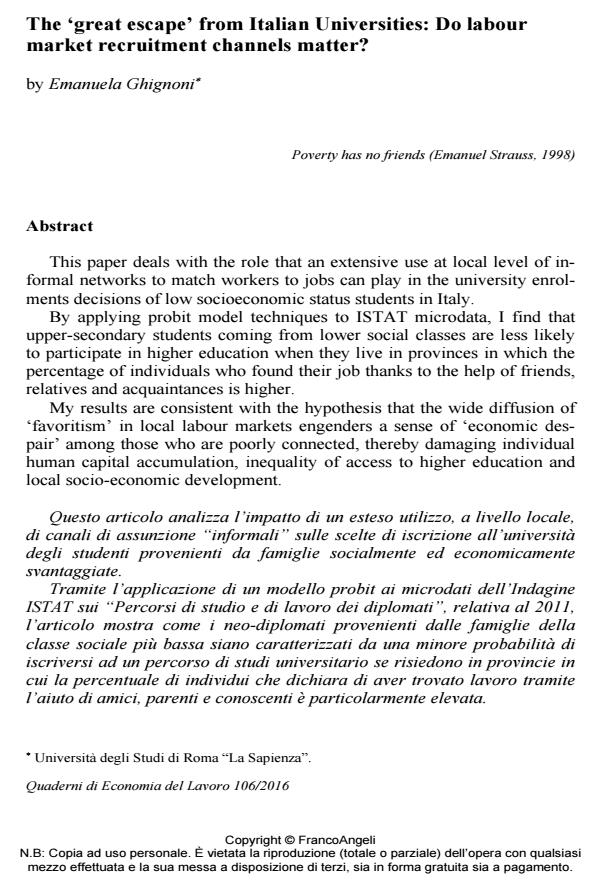The ‘great escape’ from Italian Universities: Do labour market recruitment channels matter?
Journal title QUADERNI DI ECONOMIA DEL LAVORO
Author/s Emanuela Ghignoni
Publishing Year 2017 Issue 2016/106
Language English Pages 27 P. 49-75 File size 949 KB
DOI 10.3280/QUA2016-106004
DOI is like a bar code for intellectual property: to have more infomation
click here
Below, you can see the article first page
If you want to buy this article in PDF format, you can do it, following the instructions to buy download credits

FrancoAngeli is member of Publishers International Linking Association, Inc (PILA), a not-for-profit association which run the CrossRef service enabling links to and from online scholarly content.
This paper deals with the role that an extensive use at local level of informal networks to match workers to jobs can play in the university enrolments decisions of low socioeconomic status students in Italy. By applying probit model techniques to ISTAT microdata, I find that upper-secondary students coming from lower social classes are less likely to participate in higher education when they live in provinces in which the percentage of individuals who found their job thanks to the help of friends, relatives and acquaintances is higher. My results are consistent with the hypothesis that the wide diffusion of ‘favoritism’ in local labour markets engenders a sense of ‘economic despair’ among those who are poorly connected, thereby damaging individual human capital accumulation, inequality of access to higher education and local socio-economic development.
- Le scelte di fertilità e la durata della maternità in Italia: vincoli economici e norme sociali Debora Di Gioacchino, Emanuela Ghignoni, Alina Verashchagina, in QUADERNI DI ECONOMIA DEL LAVORO 110/2020 pp.93
DOI: 10.3280/QUA2019-110005 - Escape from parents' basement? Post COVID-19 scenarios for the future of youth employment in Italy Giulia Parola, in QUADERNI DI ECONOMIA DEL LAVORO 111/2021 pp.51
DOI: 10.3280/QUA2020-111003
Emanuela Ghignoni, The ‘great escape’ from Italian Universities: Do labour market recruitment channels matter? in "QUADERNI DI ECONOMIA DEL LAVORO" 106/2016, pp 49-75, DOI: 10.3280/QUA2016-106004